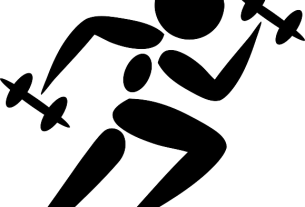Animal kingdom fitness regimens are diverse and fascinating. While humans may not possess claws or climbing capabilities like monkeys and apes, we have evolved a highly developed brain allowing us to design unique workout routines catering to individual needs. Humans should emulate animals as role models when shaping their fitness routines due to the animals' innate understanding of how important physical activity is for overall health and well-being. Animals demonstrate the incredible energy reserves and diverse fitness routines, serving as living examples of the importance of staying active – something humans should also take note of!
– Fitness Through Exercise In The Animal Kingdom

Fitness in the animal kingdom is incredibly diverse and fascinating. From birds to bears, all living creatures have evolved their own unique ways of exercising and staying healthy. For example, cheetahs are known for their speed and agility while giraffes use their long necks to stretch their muscles. Even insects like ants and bees have been observed performing complex physical tasks as part of their daily routines. It’s clear that fitness is just as important in the animal kingdom as it is in human society, but it manifests differently due to species-specific physiological limitations or adaptations.
While humans do not possess claws like cats or climbing capabilities like monkeys and apes, we are blessed with a highly developed brain that allows us to design our workout routines in various ways – from high-intensity weightlifting at the gym to more low-key cardio exercises such as cycling or swimming. Our fitness culture has evolved over time too, with trends shifting towards personalized training programs tailored specifically to individual needs rather than rigid group classes that don’t cater well enough for diversity in body types and workout preferences. Ultimately though it is essential we emulate some of nature’s most elegant fitness models – be they birds or lions – as role models when designing our own fitness routines; after all they have evolved over millions of years just like humans have done!
– Understanding Animals’ Gym Routines

Animals have been known to follow their own fitness regimens for centuries. From running away from predators in the wild, to swimming and diving in the ocean or simply going on long hikes through dense forests – animals have found countless ways to get their hearts racing and stay in shape. While humans may not be able to replicate some of these workouts at the gym, it’s clear that fitness is just as important in the animal kingdom.
Animals have an innate ability to understand the importance of being physically active. Whether they are climbing trees or leaping over obstacles on their way to food sources – animals have a natural instinct to stay mobile and healthy. In this sense, animals can be seen as living examples of how important physical activity is for overall health and well-being. With their seemingly endless energy reserves and diverse fitness routines, it’s clear that animals are truly in tune with the importance of keeping up an active lifestyle – one that humans should also take note of!
In summary, it is clear that animals have a unique approach to fitness and exercise within their natural environments. Their gym routines are unlike those of humans, as they focus on survival skills rather than the pursuit of physical perfection. However, by learning from these creatures we can gain insight into our own fitness regimens and potentially improve them. As previously mentioned, it’s important to note that each species has its strengths and weaknesses when it comes to exercise routines. Therefore, understanding animals’ gym routines can lead us towards a greater appreciation of their ability and diversity. To summarize, the animal kingdom offers an array of fascinating examples that showcase how fitness is achieved through natural means rather than purely man-made efforts. By studying these examples closely, we may find ourselves more in tune with our own physical capabilities as well as those around us.


